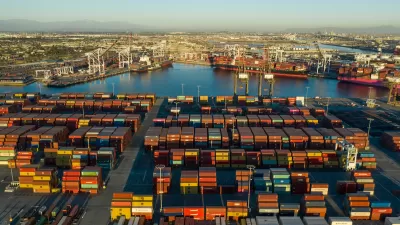The McKinsey Global Institute has just published a major report outlining four potential scenarios for urbanization in China.The main thrust of the report is that China needs to focus less on growing its cities and more on making them efficient and productive. Given the massive levels of capital investment Chinese cities have seen over the last 20 years, it makes sense that the country's urban planners need to find ways to squeeze more capacity out of these systems. After all, as McKinsey projects, another 350 million people will need to be accommodated, some 250 million of them as rootless rural migrants.
The McKinsey Global Institute has just published a major report outlining four potential scenarios for urbanization in China.
The main thrust of the report is that China needs to focus less on growing its cities and more on making them efficient and productive. Given the massive levels of capital investment Chinese cities have seen over the last 20 years, it makes sense that the country's urban planners need to find ways to squeeze more capacity out of these systems. After all, as McKinsey projects, another 350 million people will need to be accommodated, some 250 million of them as rootless rural migrants.
While McKinsey forecasts that the most likely trajectory, given no intervention, is a dispersal of urban population growth to a much larger array of mid-sized cities (which is China means settlements of 1.5-5 million people!). The report argues that while the central government can't directly control urban growth, it can utilize infrastructure spending and political muscle to concentrate growth in a handful of larger cities, reducing land and energy consumption and concentrating domestic talent and foreign investment in highly productive clusters.
Along with the full report is an interactive feature that lets you play out some of the projections. Watching the entire eastern seaboard of China turn into a more-or-less continuous sprawl of urbanization is fascinating. I wonder how Europeans might have felt in the 1960s watching the same thing for North America (they had to make do with the static maps of Jean Gottman's Megalopolis).
A summary of the report is available in the McKinsey Quarterly.
While we're on it, anyone wishing to understand the last 20 years of Chinese urbanization (and the deep historical context of the last 100 years) ought to be reading Tom Campanella's stupendous book Concrete Dragon (Amazon), published earlier this year.

Maui's Vacation Rental Debate Turns Ugly
Verbal attacks, misinformation campaigns and fistfights plague a high-stakes debate to convert thousands of vacation rentals into long-term housing.

Planetizen Federal Action Tracker
A weekly monitor of how Trump’s orders and actions are impacting planners and planning in America.

Chicago’s Ghost Rails
Just beneath the surface of the modern city lie the remnants of its expansive early 20th-century streetcar system.

Bend, Oregon Zoning Reforms Prioritize Small-Scale Housing
The city altered its zoning code to allow multi-family housing and eliminated parking mandates citywide.

Amtrak Cutting Jobs, Funding to High-Speed Rail
The agency plans to cut 10 percent of its workforce and has confirmed it will not fund new high-speed rail projects.

LA Denies Basic Services to Unhoused Residents
The city has repeatedly failed to respond to requests for trash pickup at encampment sites, and eliminated a program that provided mobile showers and toilets.
Urban Design for Planners 1: Software Tools
This six-course series explores essential urban design concepts using open source software and equips planners with the tools they need to participate fully in the urban design process.
Planning for Universal Design
Learn the tools for implementing Universal Design in planning regulations.
planning NEXT
Appalachian Highlands Housing Partners
Mpact (founded as Rail~Volution)
City of Camden Redevelopment Agency
City of Astoria
City of Portland
City of Laramie






























